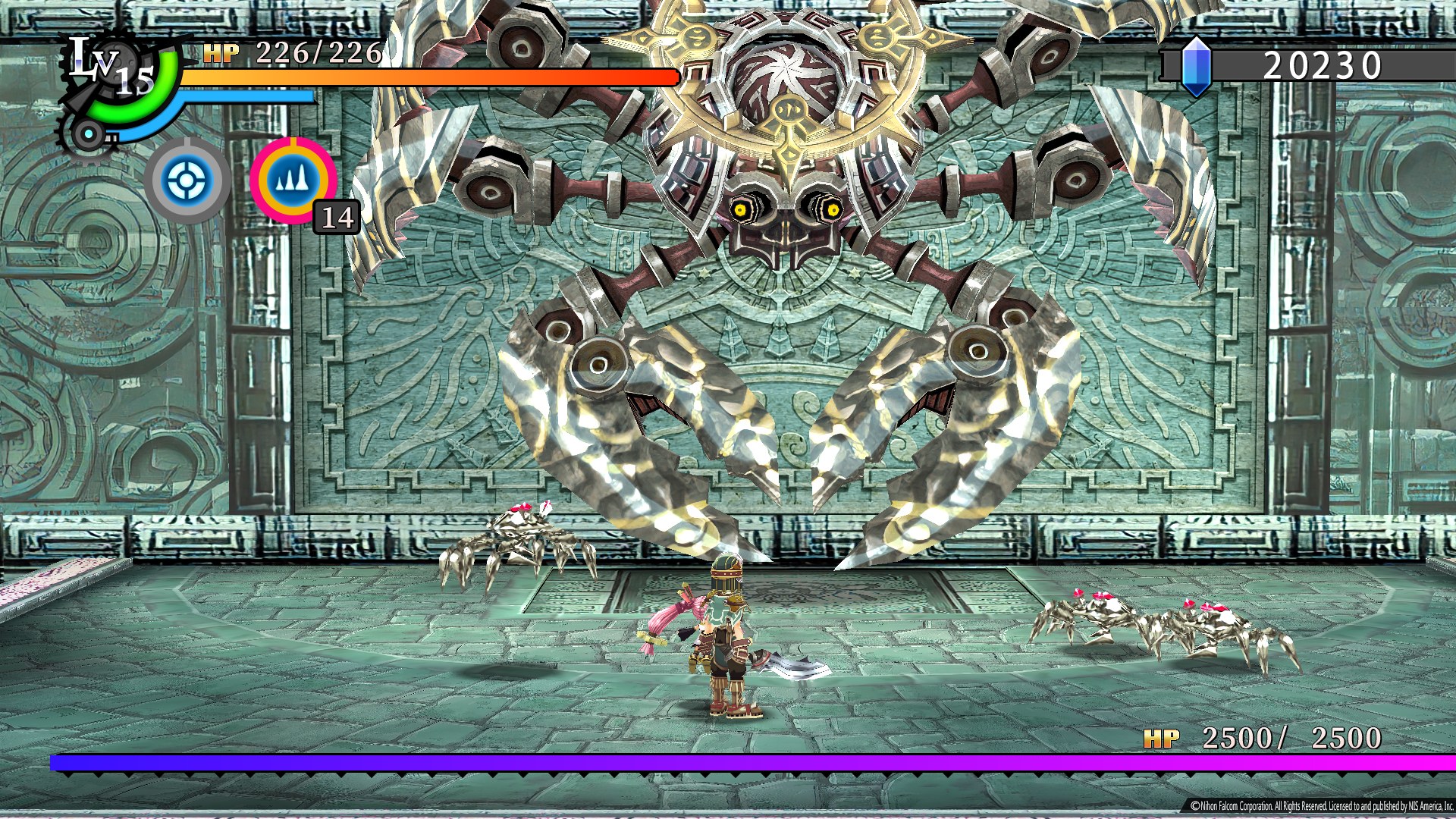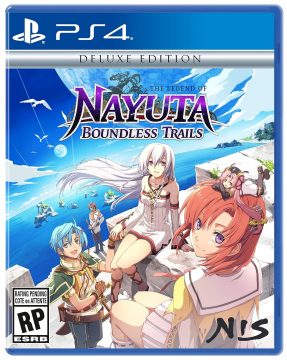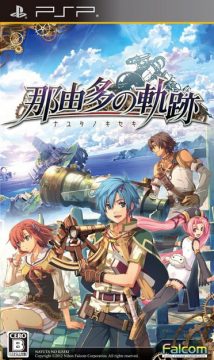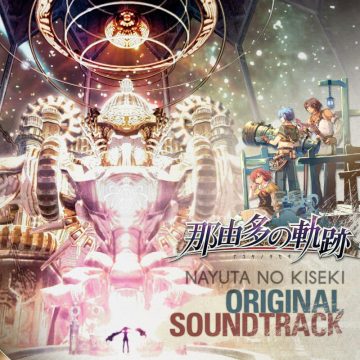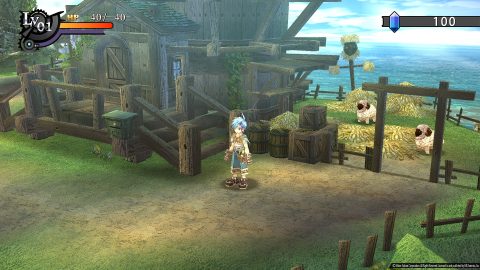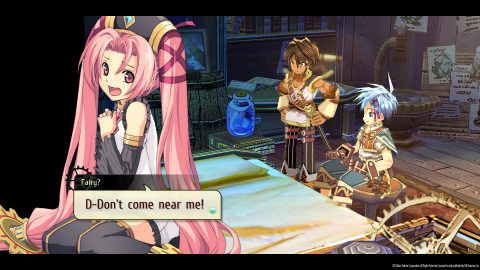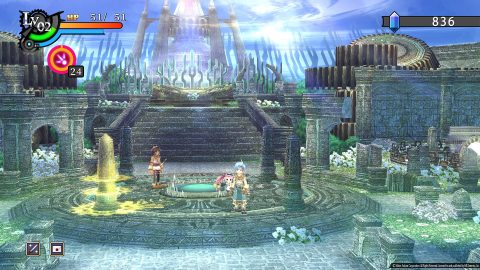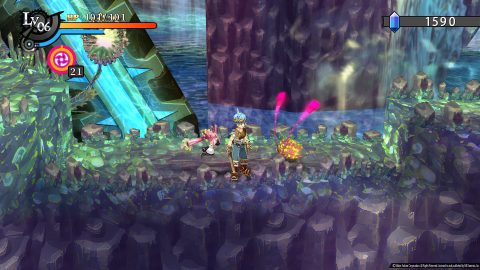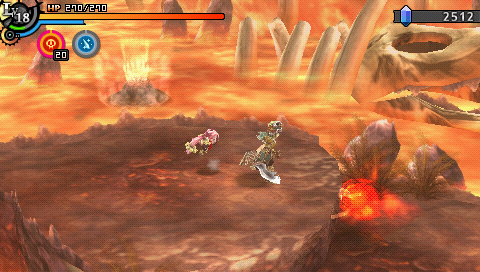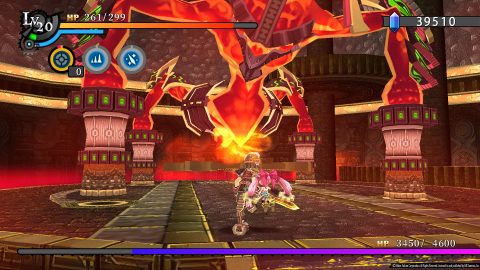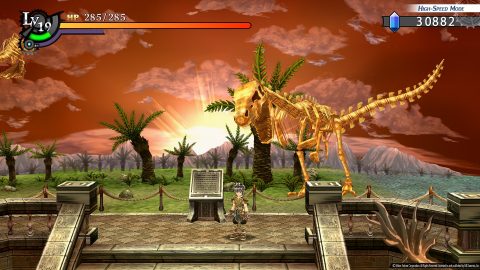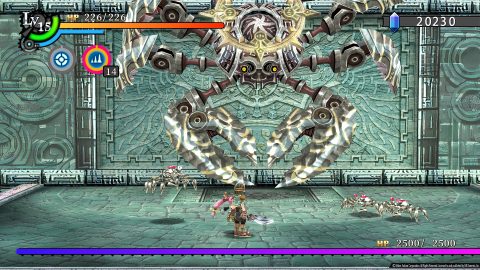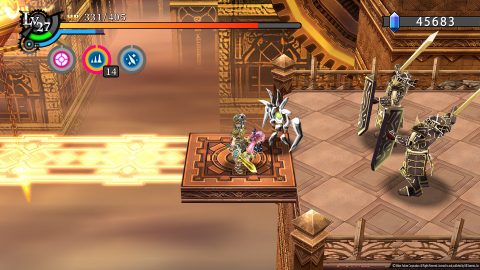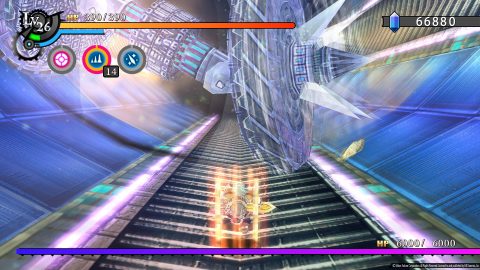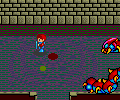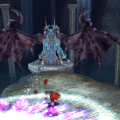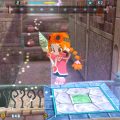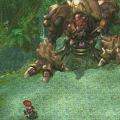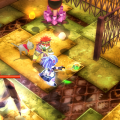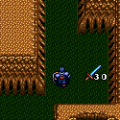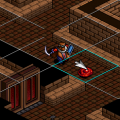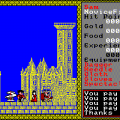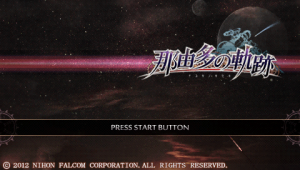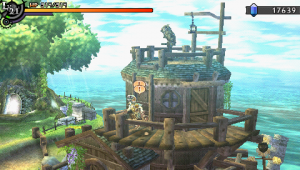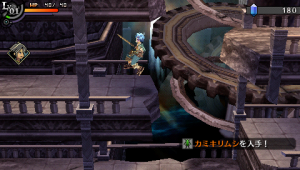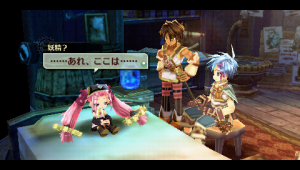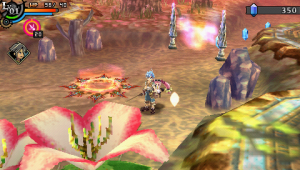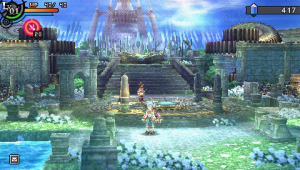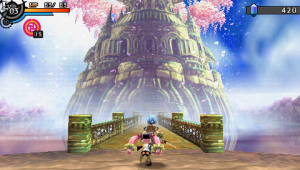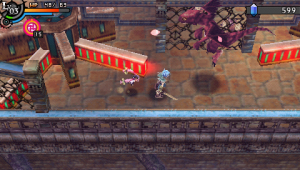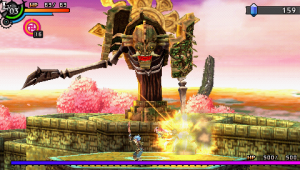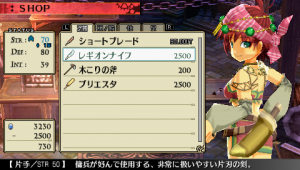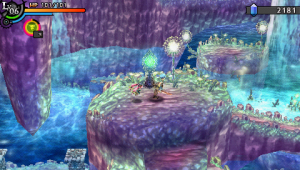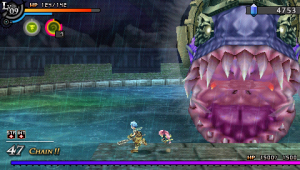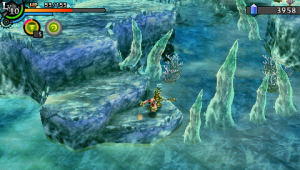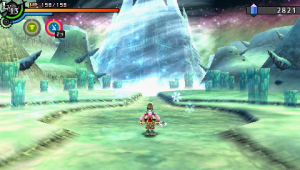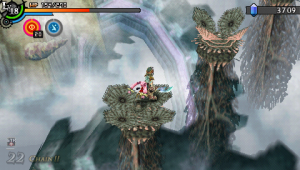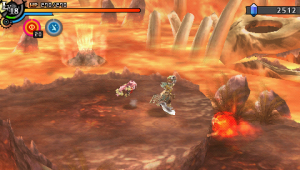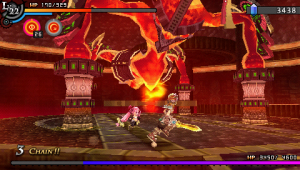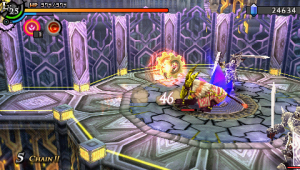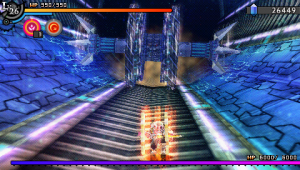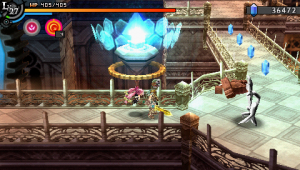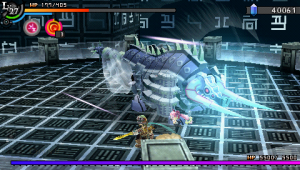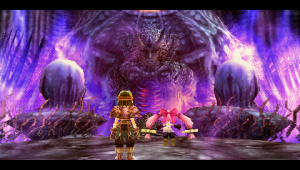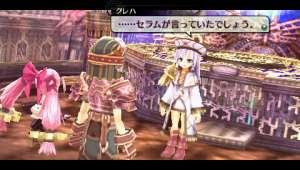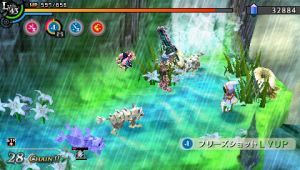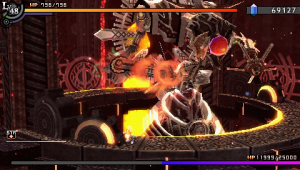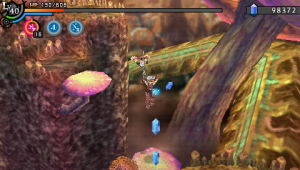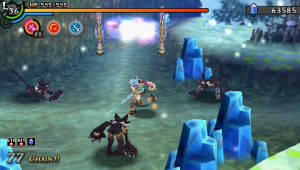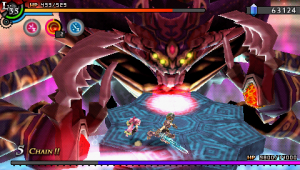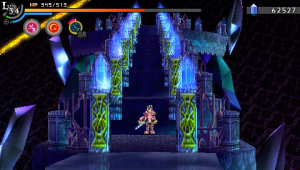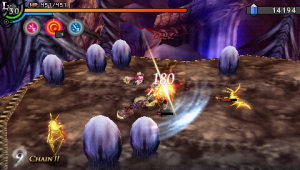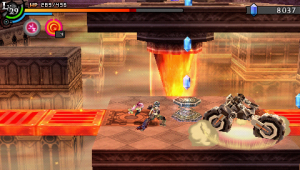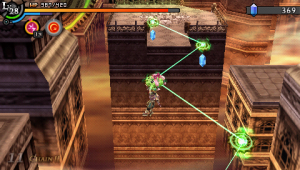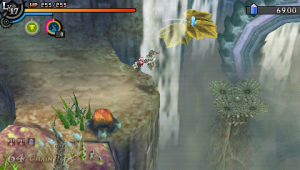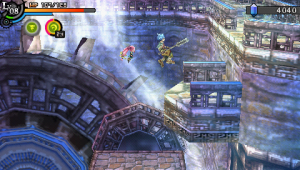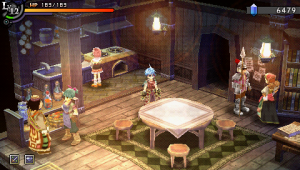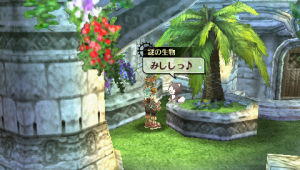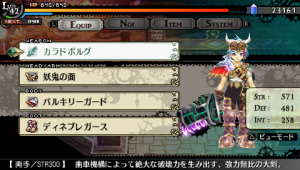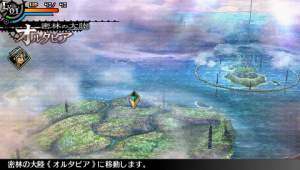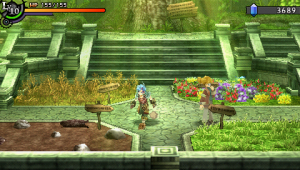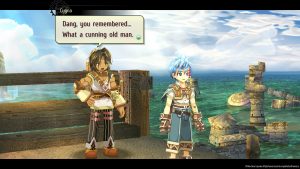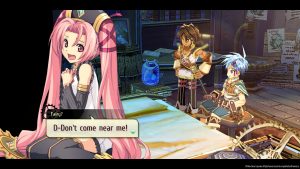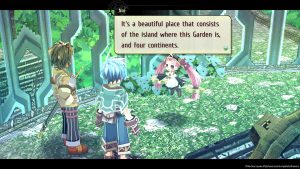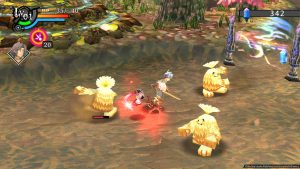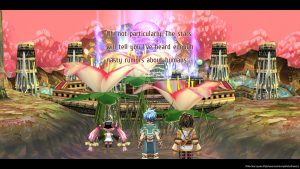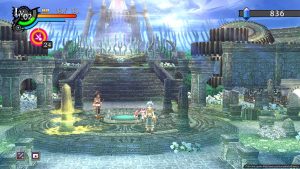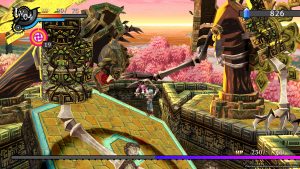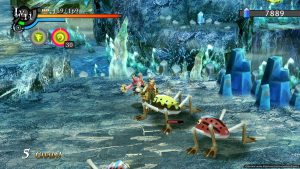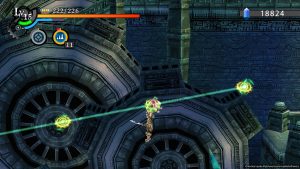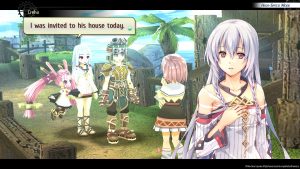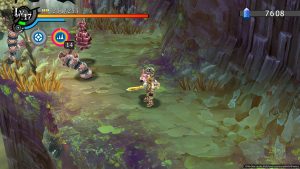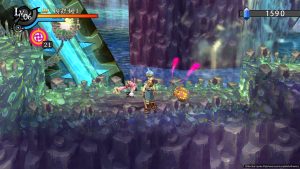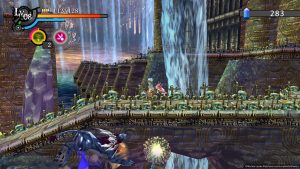Though Japanese developer Nihon Falcom was long known by RPG fans for their work on Ys, Sorcerian and many popular RPGs, the Trails in the Sky series (known in Japanese as Sora no Kiseki) propelled them to great levels of popularity when they were released on the PSP. Refocusing their efforts from the PC to Sony’s portable platform, they began expanding the series even further, effectively creating their own Final Fantasy-style franchise. In branching out, the developers created The Legend of Nayuta: Boundless Trails, known as Nayuta no Kiseki in Japan, an action RPG that’s vastly different title from the other games in the series, even though it shares its namesake. It was originally released for the PSP in Japan only in 2012, but later received a worldwide English release for other platforms in 2023.
The story takes place on Remnant Isle, a small settlement in the vast Sea of Ciencia. The common belief is that nothing lies beyond the expanse of the ocean, believing the flat earth to simply expand off into infinity. A young boy named Nayuta Herschel, an amateur astronomer, feels differently, and believes that there’s something greater in the expanses. On occasion, crystal fragments fall out the sky. When examined, they show visions of another world, full of wondrous flora and fauna, which is called Lost Heaven.
Everything gets set in motion when something much larger falls from the sky – that is, a whole set of ruins. Nayuta explores and discovers the entrance to another world, called the Garden of Stars. Here he can visit the worlds seen through the crystal fragments, broken up into four lands, but collectively known as Terra. Nayuta’s sense of wonder sets him off on an exploration of these lands, which will help him uncover the history behind Lost Heaven, and the disappearance of the race known as the Mythos.
Characters
Nayuta Herschel
A fifteen year boy with bright blue hair, resident of Isle of Remnants, and amateur astronomer. His adventurous spirit helps piece together the mysteries of the long extinct people of Mythos.
Noi
A small floating girl (dubbed a “fairy” by the Isle of Remnants townsfolk) who Nayuta discovers when the ruins fall from the sky. She is the administrator of Terra and fights alongside Nayuta as his magic using companion. She initially has a distaste for humans but soon learns to like them thanks to Nayuta.
Cygna Alhazan
Nayuta’s childhood buddy. At the beginning of the game, they are both returning from attending school on a different island.
Lyra Barton
A childhood friend of Nayuta and Signa, Lyra very obviously has a crush on the main character, but per usual cliched protocol, she has a tough time spelling it out to him. Often grows jealous of Noi, due to this fact.
Orbus Alhazan
A master swordsman, Orbus spends most of his time hanging out by the beach, and will teach Nayuta new techniques once he’s obtained enough stars.
Eartha Herschel
Nayuta’s sister is a master chief, and will teach him how to cook, providing he can bring her the right ingredients.
Creha
A mysterious girl that Nayuta discovers hibernating in a coffin in the Garden of Stars. She is one of the last remaining members of the Mythos civilization.
Zechst
A mysterious man who steals the Master Gear from Noi at the beginning of the game. The main antagonist.
Legend of Nayuta might feature the Trails name, in the English subtitle anyway, but in actuality, it’s much closer to Zwei!! or Gurumin, two earlier series from Falcom’s action-RPG pantheon. Unlike Ys, there is no overworld to explore, as navigation between stages is handled via a map screen. The world of Terra is divided up into four different worlds; each world has three stages, a two-part temple stage, and a boss battle. Each stage is rated with a suggested experience level, though these aren’t requirements. In fact they’re a bit on the high side, so you can generally enter a stage and not have a problem if you’re a few levels below. The map screen also helpfully indicates what items can be found in the stage, and keeps track of your progress, in case you need to revisit earlier levels.
Nayuta‘s stage designs are much more complex than previous Falcom action-RPGs, from both from a design and graphical perspective. They’re well paced, alternating swiftly between combat and platforming exercises, and just as importantly, they look utterly gorgeous. In short, the older games prioritized RPG elements over level designs; Nayuta implements both aspects perfectly. It also feels like a natural evolution of 32-bit action-platformer RPGs like Brave Fencer Musashi and Threads of Fate.
The Legend of Nayuta seems to run on a similar engine to Ys Seven, with polygonal characters replacing the 2D sprites of the other Trails games. The graphic design is even more impressive, with nearly every screen exploding with color and fantastical designs. In its initial PSP release, it looks a bit jagged due to the low resolution of the platform, but even within those constraints, it’s easily the best looking game on the system.
The graphic design also relies heavily on the theme of “gears”. Nayuta’s sword attacks are Gear Arts; Noi floats with spinning gears; many of the stages have large, rotating gears throughout. One of the best weapons you can find is a gigantic sword that has a blade like a chainsaw, except it’s comprised of mini gears. This is representative of technology of the lands explored by Nayuta, in contrast to the world he knows, which isn’t quite as advanced.
Upon completing a level, you are awarded stars based on your performance. You always obtain one from reaching the end, while a second is obtained if you manage to find all of the hidden crystals and treasure chests. A third is granted if you fulfill a unique requirement, typically things like gathering a number of crystals, or destroying enough objects, or avoiding falling down too many pits. After obtaining a certain number of stars, you can visit your mentor in the town to learn a new technique, or upgrade an old one. The tech tree is 100% linear, so you don’t get to pick and choose. It’s not always possible to find everything the first time through levels, so sometimes you need to revisit them after finding new abilities.
A major theme of the game is the changing of seasons, and this affects the levels too. Each of the main levels has four variations, depending on the season – in summer, the volcano stage is flowing with lava, but in winter, it’s filled with freezing water. The seasonal changes are not mere palette swaps though, as there are often fairly substantial changes in the layouts, switching out obstacles and enemies or sending to you different parts of the level.
For example, when you first enter La Worg, it’s a canyon floating with lava, but when playing through in winter, it’s all changed to freezing ice. The third time, it’s spring, and the areas that were previously liquid are now sand. In one of the levels, there’s a whirlpool that you needed to jump around in the winter and summer variations, but in the fall version, you need to get sucked in, which takes you underground to a whole different, previously unexplored part of the stage. It’s a substantially more refreshing way to add content while still recycling level layouts, and works much better than the reversed levels found in Gurumin. There’s also quite a bit of content. In the main game, you go through two variations of each of the four areas of Terra, plus several other levels afterward leading to a major battle. There’s a substantial epilogue chapter which features a third seasonal variation, with the fourth unlocked in New Game+.
The controls are similar to the Ys games, although Nayuta’s actions are a little weightier and slower. However, unlike the later Ys games, which removed the jump button in favor of a dash button, The Legend of Nayuta uses both, which allows for both maneuverability in combat and platforming elements in the stages. In the beginning, Nayuta’s moves are rather basic, and the first levels are a little on the dull side. As the game progresses, you find new types of weapons with slightly different rhythms, plus gain new abilities like guards and downward stabs. In the Zwei!! games, you needed to switch between your two characters if you wanted to use physical or magical attacks. Instead, while you control Nayuta, Noi simply floats by your side, and her magic is activated with a seperate button, allowing you to use both types of attacks at once. Each magic spell has a limited number of uses, but slowly regenerates over time. Repeated use also levels them up, to increase their strength and grant more uses.
Separate from the magic spells is the Gear craft gauge, which manages a number of different abilities, and also regenerates automatically. Nayuta can execute a chain of special attacks by holding down the attack button. A few levels in, Nayuta obtains the Gear Hold, which lets you hang onto grapple points, which makes platforming a little more interesting. Even cooler is the Gear Buster, which encases you in a gear and lets you roll around. It’s a bit like the Spider Ball in the Metroid games, in that you can use it to climb up certain tracks, but it’s also a fantastic offensive weapon, because you can bound into an enemy arena and whirl around to get some quick hits in. Plus, it’s a much faster method of transportation – why walk when you can roll? It’s a shame that you don’t get it until halfway through the game, because that’s the point when The Legend of Nayuta is elevated to a whole new level of excellence.
The cooking system from Zwei!! makes a return, albeit in modified form. Throughout the stages, you find various plants and meat which can be cooked into a variety of food. When you first begin cooking, you need to be taught by your sister Eartha, but once you’ve made a dish once you can make it without revisiting her. Food not only replenishes health, but also grants you extra experience points.
Nayuta diverges from Zwei!! in that you still gain experience points from killing enemies, while proper cooking just complements your level gaining. Additionally, you can’t cook items during the stage – you need to prepare everything beforehand, and there’s only a limited number of slots in your lunch box, so you can’t just spam restorative items to get you out of binds.
Each chapter, there are a small number of subquests you can run for various NPCs. Many of these involve visiting areas of Terra and manipulating the weather in various ways, like planting something in spring and harvesting it in summer. Plus, since you’re exploring uncharted territory, the town opens up a museum that will buy various artifacts you find lying around. As you collect more stuff, more sections of the museum open up, displaying statues, gems, fossils, aquatic creatures, and others, complete with a small description. Such item collection subquests are not new to RPGs – in this case, it’s an expansion of the hunter guild from Zwei 2 – but it really exemplifies the way that the town has been cut off from the rest of existence, and are still sorting out their history.
The Ys games are known for their fantastic boss battles, and The Legend of Nayuta actually goes even further to one-up. Not only are they gigantic, but they drastically change forms and attack patterns a few times throughout the fight. One of the best boss battles, in a game filled with awesome boss battles, is against a gigantic fish (which, for some reason, has a set of wheels attached to its hind quarters). In the first stage of the battle, you fight on a bridge alongside its pool, taking down its fins as it swims by. After sustaining enough damage, it’ll bit off a section of the platform and send you spilling over the edge, with the battle continuing as you raft down the waterfall at top speed. In spite of their complexity, they aren’t as difficult as something like Ys: The Oath in Felghana, at least on the default difficulty settings.
Of course, if it doesn’t look or play like a Trails game, then why does it use its name? One could take the cynical route and suggest that the title was just bolted onto an unrelated game, in order to associate with Falcom’s cash cow series. To some extent that may be true, considering the game was developed by some of the same staff as Zwei 2, and that series apparently didn’t pan out.
The story isn’t connected to the mainline Trails games or any other Legend of Heroes titles, at least not directly, though some hints are open to interpretation. It has but a fraction of characters, and the script doesn’t nearly approach the length that the series is known for. But yet, there are some commonalities, such as using the same currency (Mira), the same units of measurement and a similar achievement system. In other words, it’s linked to the Trails series in the same way that all of the Final Fantasy games are linked together – though very different, there are still small commonalities that fans will be able to appreciate. Plus there’s a running subquest to uncover the hidden location of Mishy the cat from the later Trails series.
The soundtrack is excellent, as typical of Sound Team JDK. The style is similar to Ys Seven, although there’s a greater predilection for orchestral themes over rock anthems, particularly in the boss battles. There’s also a wider variety of instrumentation, with one set of tracks having a particularly enthusiastic accordion.
While the action isn’t as quick or as polished as the Ys games, The Legend of Nayuta otherwise has a big leg up in the level design department, plus much better bosses. With the removal of the platforming elements in Ys Seven and Ys: Memories of Celceta, both the dungeons and the boss encounters feel a little flat and repetitive, so Nayuta is a fine alternative that substantially bests those games in these areas.
While originally released on the PSP in 2012, The Legend of Nayuta found its way to the PlayStation 4, Switch, and Windows platforms in 2021, with an official English localization following in 2023. The higher resolution really makes the visuals shine in ways that weren’t apparent on the small PSP screen, particularly when it comes to character models. It also runs at a full 60 FPS, so it plays smoother. Also included is a High Speed mode, which fast-forwards both the cutscenes and the action sequences, which is handy when replaying levels for subquests.
